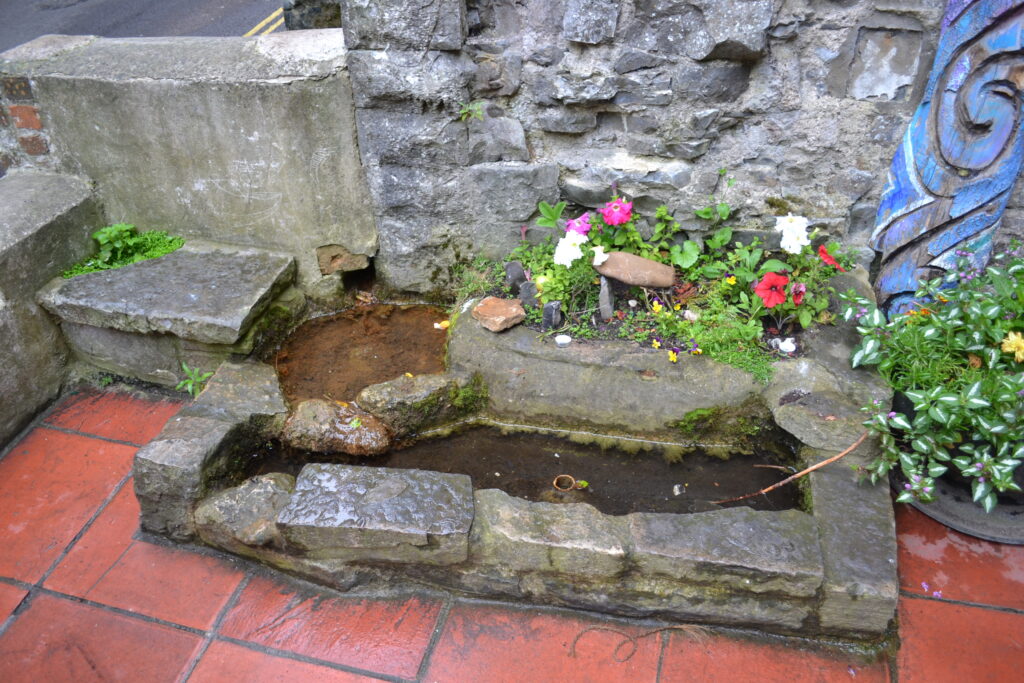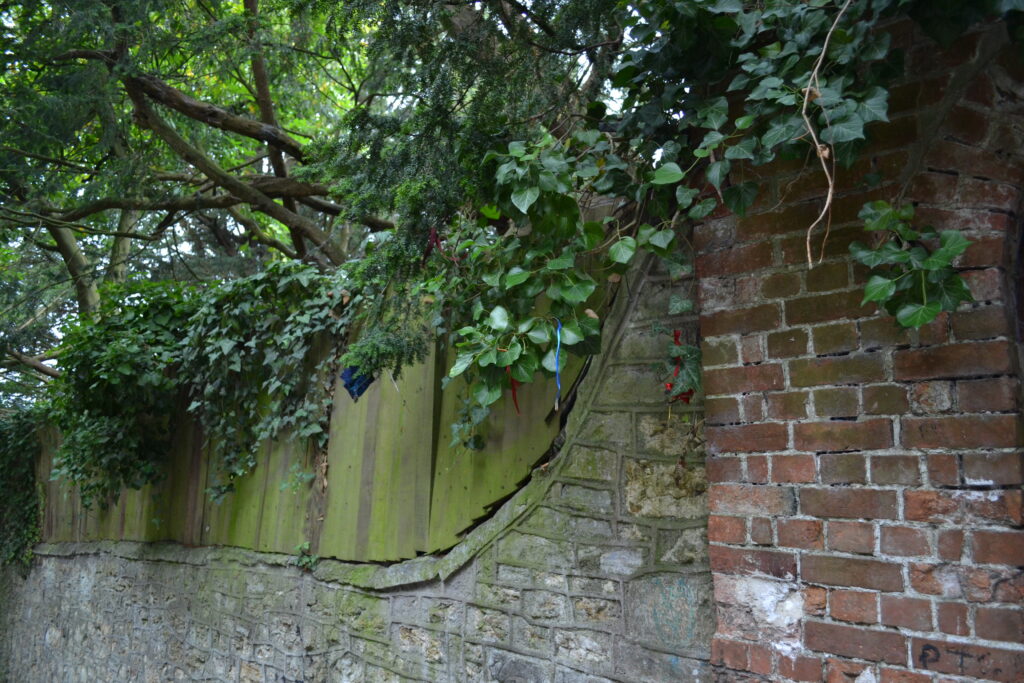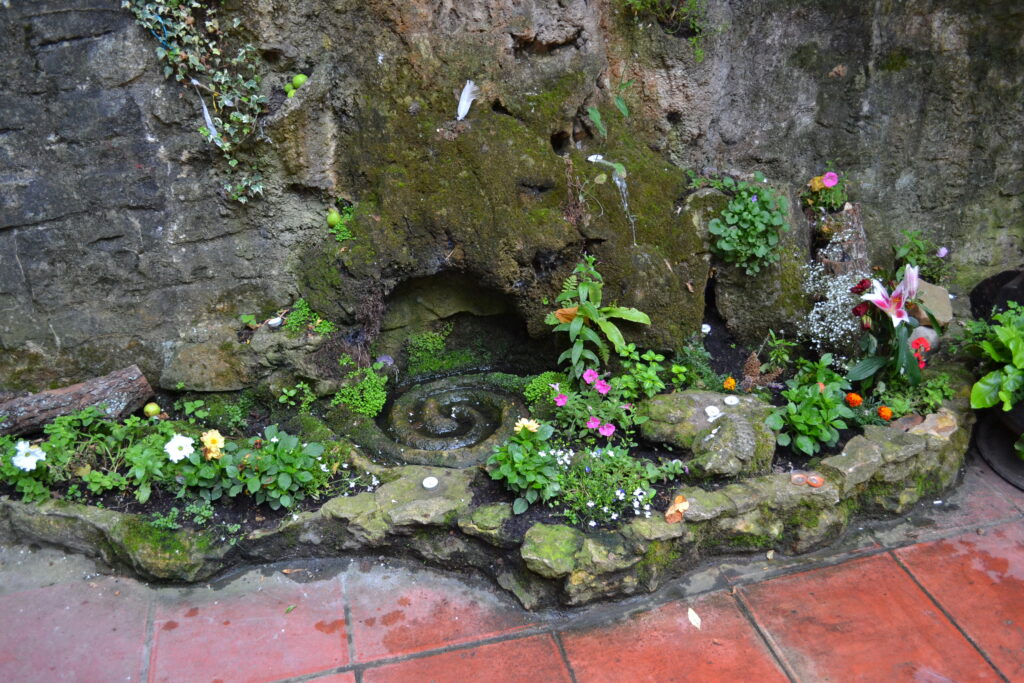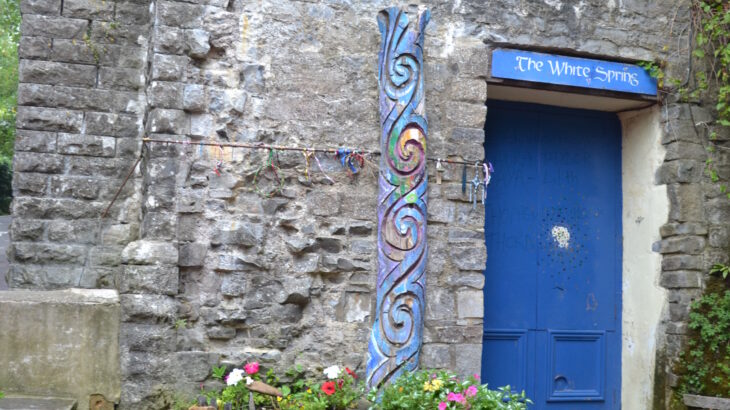
White Spring
~ Wellhouse Lane, Glastonbury, England BA6 8BL, UK +44 7340 288392 * https://www.whitespring.org.uk/ ~
While backpacking Europe during the Summer of 2011, this was one of my favorite sacred spaces to visit, even more so than the infamous Chalice Well. The White Spring is a free-to-visit spring welling up in a Victorian pump house that has been converted into a temple and pilgrimage site. It offers calcium-rich spring water to all for free, unlike the Chalice Well, which charges high admission to enter their sacred garden. The concept and dedication to the well strengthened the birthing of my decision to be a Water Protector and Springs Guardian for the remainder of my life. This space was monumental for this change from a Protector of the Ancestors (Archaeologist) to a Water Guardian as my life’s purpose.
Within a few feet from one another, the two Isle of Avalon mysteries well forth from the Earth, bestowing blessings, magic, and healing to its visitors and pilgrims. Each offers different healing properties, the Chalice Well being the Red Spring rich with iron, the other white with calcite, both from the magical caverns beneath the Glastonbury Tor, with rumors of Merlin’s magic. There is actually a third Blue Spring that has since vanished.

A temple has been built here at the White Spring offering the gift of pure water that is cavernous, mysterious, dark, Gothic, and magical as contrary to the Chalice Well in a well lit open-aired garden. The interior has three domed vaults standing at 16 feet in height with beautiful bowed floors that some say mimic the illusion of the hull of a boat moored at the portal to the Otherworld.
The pools within were designed and constructed based on sacred geometry following the Michael Ley line that flows through space with shrines added honoring ancient energies and the Spirits of Avalon.
A company of volunteers watch over the Spring and temple who designed it, built it, and cared for it on a daily basis. The site sees pilgrimages and visitors daily. Group ceremonies and meditations are also conducted daily during opening hours, including celebrations of the turning of the seasons, the full moon, and the new moon. Private ceremonies can be arranged. There is no charge or expectation of donations, and all caretakers do not get paid.

The sanctuary is candle-lit and dark; the sound of the water flowing can meditatively be heard and is a guide for ceremony and contemplation. Talking or conversations is strictly discouraged as silence other than the Spring is desired, though songs are welcome, and check with the wellkeeper if wanting to play musical instruments. No Cameras, mobile phones, or electronic equipment is permitted in the sanctuary.
Legend has it that Glastonbury is England’s most sacred site and is where the foundations of the earliest church in Britain were formed. It may be the site of the earliest church in the world, second to Jerusalem, and was dedicated to Mary. (There is no archaeological evidence to support this legend) The Glastonbury Tor, or the Holy Hill of Albion, is also believed to be England’s most sacred mountain and a place of Ancient Goddess worship. The Tor and its caverns beneath host numerous aquifers and springs that well forth from its base.
Many of the springs have dried up except the Red Spring (Chalice Well) and the White Spring. There is evidence of a monastic site at the summit of the Tor, and archaeological excavations revealed it is likely that early Celtic Christian hermits once lived on the sacred site of the White Spring. In 1872 a well house was constructed over the spring creating a reservoir that was used by townsfolk who were suffering from cholera and therefore destroyed the beautiful combe that once was there.
A historic document by George Wright in 1896 stated, “And what was Glastonbury like then? One thing that clings to me was the beautiful Well House Lane of those days before it had been spoilt by the erection of the reservoir. There was a small copse of bushes on the right hand running up the hill, and through it could be, not seen, but heard, the rush of running water, which made itself visible as it poured into the lane. But the lane itself was beautiful, for the whole bank was a series of fairy-dropping wells – little caverns clothed with moss and venture, and each small twig and leaf was a medium for the water to flow, drop, drop, drop into a small basin below. This water contained lime, and pieces of wood or leaves subject to this dropping became encrusted with a covering of lime. For a long time, I attended those pretty caverns with affectionate care, and Well House Lane was an object of interest to all our visitors”
The reservoir fell into disuse as the high calciferous waters often blocked the pipes, and by the 19th century, water was piped into Glastonbury from out of town, the good house falling into disuse and forgotten. In the 1980s, it was re-opened and reconstructed, being used for drinking water for the town. The walls, floors, water pipes, and chemical paint added in the ’80s were removed. The high ceilings, bowed floors and original stone walls were uncovered, unveiling the cathedral-like structure you see today. By 2004, a new owner took over the building and erected the sacred space you can now visit. The temple was consecrated in 2005. In October 2009, various pools were built inside based on sacred geometry. Its design and layout are always changing. The seasonal altar changes at each turn of the wheel. The bower that forms the Brigid shrine is rebuilt with fresh hazel for Imbolc, and a February 1st celebration is held in conjunction with Chalice Well and Bride’s Mound.
The White Spring is dedicated to the Goddess Brigid – the Celtic Fire Goddess and Guardian of the Sacred Springs within, and a perpetually burning Brigid Flame flickers her magic. A shrine in honor of the Lady of Avalon is within, as well as a shrine in honor of the King of the World of Faerie at the portal to the Otherworld. Legend has it that the nun named Brigid, who was said to be a child in 525 C.E., filled with the spirit of the Goddess Brigid, was born in Ireland from a Druidic father named Dubtach and a Christian slave mother named Brocessa. She was raised in both traditions and chose to enter a monastery – making her an abess as well as a nun. Legend states she lived and learned at the Beckery in Glastonbury before founding her abbey, Cill Dara, in Kildare, Ireland.
The Lady of Avalon is seen at the White Spring as the Lady of ancient feminine primary power as Mother, Earth Mother, Mother of God, and Mother of us all. She is forever conceiving and birthing yet remains unchanged as herself, self-fulfilled as the Virgin Mother. She is a dark lady like the earth – dark, womb-like, safe, hidden, mysterious, vast, abstract, and protective. She is also called the Black Madonna.
The King of the Faeries represents nature as wild, beautiful, majestic, diverse, interdependent, and powerful. He represents the Fae, the Otherworld, and is King of the World of Faerie as well as all the nature spirits of this world. He represents the unity of both worlds.
The White Spring is said to be a portal to the Celtic Otherworld. It is said that Gwyn Ap Nudd was said to ride through here.
More Information: https://www.atlasobscura.com/places/the-white-spring-glastonbury-england
Read more: The White Spring of Glastonbury













